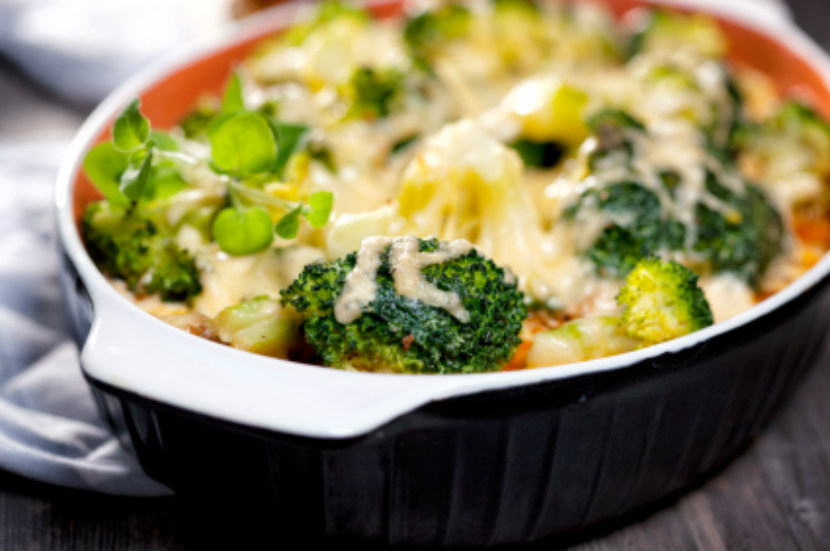
Casseroles are classic comfort food. From lasagna to Shepherd’s pie, casseroles are a warm and satisfying one-dish meal. But some casseroles are more nutritious than others.
Cooking casseroles at home means you can limit the fat, sugar and sodium content in your recipe. You can also use more vegetables and less cheese. Plus, casseroles require little tending. Once the ingredients are prepared, the casserole goes in the oven and you have some free time while it cooks. Read on to learn how to make the most out of this versatile dish.
What is a casserole?
Any ingredients that are cooked and served in the same dish can be called a casserole.
Many different ingredients can be used when making a casserole. But there is one essential ingredient that is a must-have: a casserole dish! It can be made from:
-
Ceramic
-
Oven-proof glass
-
Metal
It can be round, oval or square-shaped and should have handles so it is easy to transport from the oven to the table. Most casserole dishes also have a tight-fitting lid.
Choose the right ingredients
Casseroles are a great dinner because they can easily pack all four food groups from Canada’s Food Guide into one dish. For example, a tuna noodle casserole made with milk, peas and carrots is a complete one-bowl meal.
The ingredients you choose are important. Some casseroles are filled with fatty meat, creamy sauce, too much cheese and lots of salt. However, you can make healthier versions that taste just as good! The key to a healthy casserole is to choose recipes that call for:
-
Lots of vegetables
-
Legumes such as beans and lentils
-
Whole grain pasta or brown rice
-
Chicken, turkey or fish
-
Leaner cuts of beef, pork or lamb
-
Lower fat cheeses, such as feta, cottage, light cheddar or skim-milk mozzarella
-
Oil instead of butter – no more than 1 teaspoon per serving
Choose recipes that call for tomato sauce or a creamy-tasting sauce that’s actually made with milk.
Casseroles are often topped with cheese and breadcrumbs to add a crunchy texture. Make it healthier by using whole grain breadcrumbs. Use lower-fat cheese and limit the serving size to 1 tablespoon per serving.
Classic casseroles with a twist
Here are three modern takes on traditional casserole dishes:
Tuna shepherd’s pie:
Sauté carrots, celery and onion. Add sodium-reduced tuna and sodium-reduced tomato soup. Place all the ingredients in your casserole dish, top with a layer of mashed potato and bake until bubbly.
Mexican bean bake:
It’s layered like lasagna, but uses whole grain corn tortillas instead of noodles. The other layers include black beans, corn, chunky tomato sauce, peppers and mushrooms. Add a little cumin and jalapeno peppers and top with crunchy tortilla chip crumbs (about 1 tablespoon per serving) and lower-fat cheddar cheese.
Easy pasta casserole:
Use your leftover cooked pasta! In your casserole dish, mix cooked pasta, tomato sauce, your favorite vegetables and a can of red kidney beans. Top with a sprinkling of mozzarella cheese and whole grain breadcrumbs.
Any of these casseroles can be used as a perfect lunch. Leftovers can be frozen in single portions and used as needed.
Bottom line
Casseroles are easy because the ingredients are cooked and served in the same dish. Make healthy casseroles by using recipes that contain vegetables, beans, lean meat and less cheese.
Are you ready to cook a casserole? Try these:
Chili Casserole with polenta
Baked Springtime Risotto
Spinach and mushroom lasagna
Last Update – July 13, 2017